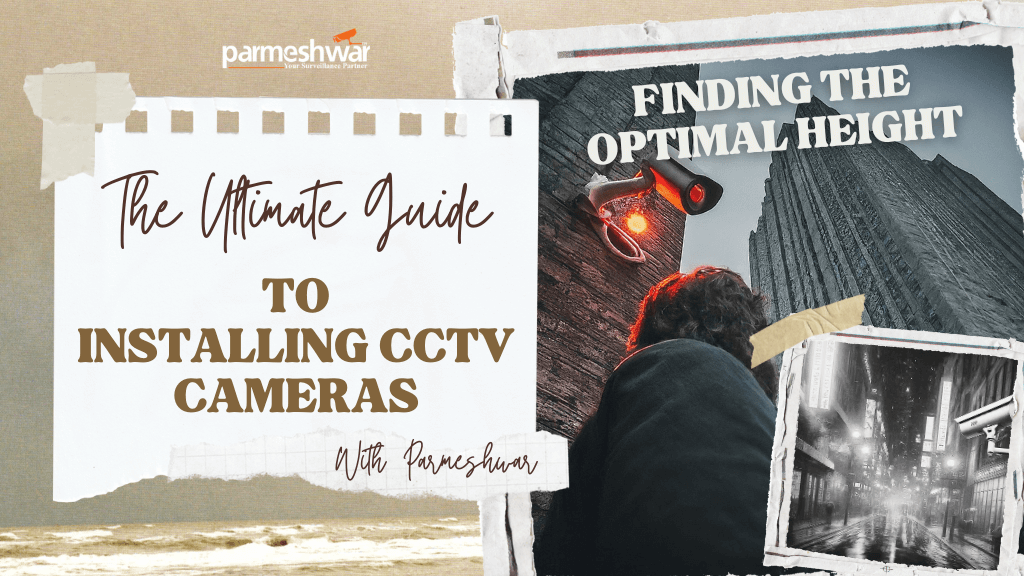
The Ultimate Guide to Installing CCTV Cameras: Finding the Optimal Height
Introduction
When installing CCTV cameras, selecting the correct height is crucial for maximizing surveillance efficiency. This guide explores the factors influencing optimal camera height, including the purpose and location, technical considerations, environmental factors, security, accessibility, and legal implications.
Purpose and Location
Choosing the right height depends on the area and purpose of surveillance:
- General Surveillance (e.g., hallways, open areas): Install cameras at 8 to 10 feet. This height avoids easy tampering while capturing clear images of individuals’ faces and actions.
- Entry Points (e.g., doors, gates): Place cameras at 7 to 8 feet to ensure clear identification of individuals entering or exiting.
- Parking Lots: Mount cameras 12 to 20 feet high to cover larger areas and capture vehicle details, including license plates.
- Outdoor Areas (e.g., building perimeters): Position cameras at 10 to 20 feet for a wide field of view, reducing blind spots and minimizing tampering risks.
Technical Considerations
- Camera Focal Length and Resolution:
- Focal Length: A longer focal length narrows the view for distant objects, while a shorter focal length broadens the view.
- Resolution: Higher resolution cameras provide clearer images, crucial for higher mounting positions to ensure details are not lost.
- Tilt and Angle:
- Angle the camera appropriately to cover the desired area and avoid blind spots.
- Use wide-angle lenses for broader areas.
- Environmental Factors
- Lighting Conditions: Ensure proper lighting or night vision capabilities to maintain clear footage in varying light conditions. Avoid glare and shadows by positioning cameras away from direct sunlight or artificial lights.
- •Weather Conditions: Use weatherproof cameras that can withstand local weather conditions. Secure cameras firmly to withstand wind and environmental factors.
Security and Accessibility
- Tampering and Vandalism:
- Install cameras high enough to prevent tampering.
- Use protective housings for added security.
- Maintenance and Accessibility:
- Ensure cameras are accessible for maintenance using ladders or lifts if necessary.
Legal and Privacy Considerations
- Compliance with Local Laws: Ensure camera installations comply with local surveillance laws and regulations.
- Privacy: Position cameras to avoid invading personal privacy, such as pointing into private residences or restrooms.
Cautions to Consider While Installing Cameras
- Network Security: Ensure your cameras are secure from hacking by using strong passwords, encryptions, and regular software updates.
- Power Supply: Verify that cameras are installed near a reliable power source or use PoE (Power over Ethernet) to avoid interruptions in surveillance.
- Signal Interference: Be aware of potential signal interference from other electronic devices, especially for wireless cameras.
- Data Storage: Plan for sufficient data storage solutions to retain footage for your required duration.
- Redundancy: Consider having backup cameras or systems to ensure continuous surveillance in case of failure.
Conclusion
Selecting the optimal height for CCTV cameras is essential for effective surveillance and security. By considering the purpose and location, technical and environmental factors, security, accessibility, legal implications, and necessary cautions, you can ensure your CCTV system is both efficient and compliant.
Optimizing the height and positioning of CCTV cameras enhances security, provides clear footage, and ensures compliance with legal standards. Implement these guidelines to maximize the effectiveness of your surveillance system.
Share on Social Media
Checkout Video Tutorial
Share On Social Media
We Provide the Best Service in Industry
This is what our customer say…Check out yourself what they have experience.